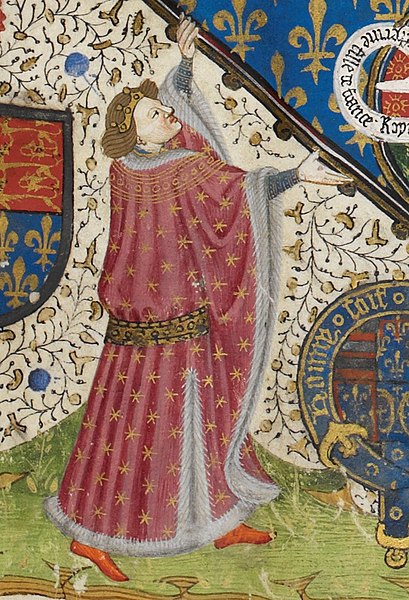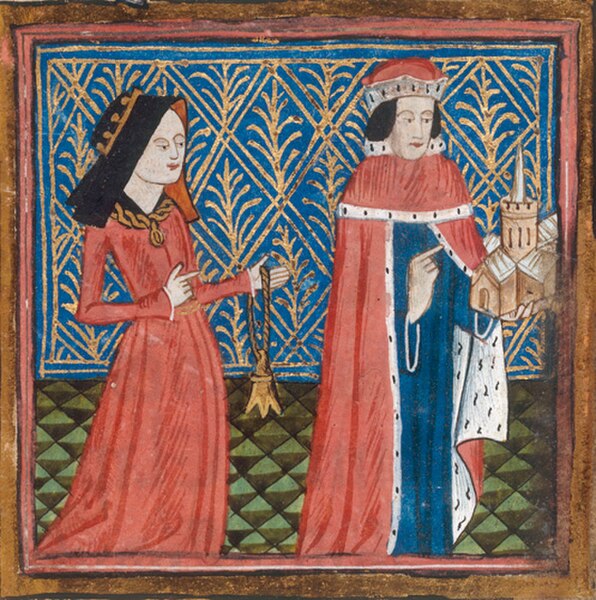The Palace of Placentia, also known as Greenwich Palace,
was an English royal residence that was initially built by Humphrey, Duke of Gloucester, in 1443. The palace was a place designed for pleasure, entertainment and an escape from the city. It was located at Greenwich on the south bank of the River Thames, downstream from London. On a hill behind the palace he built Duke Humphrey's Tower, later known as Greenwich Castle; it was subsequently demolished to make way for the Royal Observatory, Greenwich, which survives. The original river-side residence was extensively rebuilt around 1500 by Henry VII. A detached residence, the Queen's House, was built on the estate in the early 1600s and also survives. In 1660, the main palace was demolished by Charles II to make way for a proposed new palace, which was never constructed. Nearly forty years later, the Greenwich Hospital was built on the site.
The Palace of Placentia, after it was rebuilt around 1500 by Henry VII
A sketch of Greenwich Palace, published in The Gentleman's Magazine in 1840 (earlier published by W. Bristow in 1797)
Historic marker on the site of the former palace
Humphrey, Duke of Gloucester
Humphrey of Lancaster, Duke of Gloucester was an English prince, soldier and literary patron. He was "son, brother and uncle of kings", being the fourth and youngest son of Henry IV of England, the brother of Henry V, and the uncle of Henry VI. Gloucester fought in the Hundred Years' War and acted as Lord Protector of England during the minority of his nephew. A controversial figure, he has been characterised as reckless, unprincipled, and fractious, but is also noted for his intellectual activity and for being the first significant English patron of humanism, in the context of the Renaissance.
c. 16th-century drawing based on contemporary portrait (from the Recueil d'Arras)
Gloucester in the frontispiece of the Talbot Shrewsbury Book, 1445
Jacqueline, Countess of Holland and Zeeland, c. 1435
Illuminated miniature of Humphrey and his second wife Eleanor from Thomas Walsingham's Book of Benefactors to St Albans, 1431. Cotton MS Nero D VII, British Library







